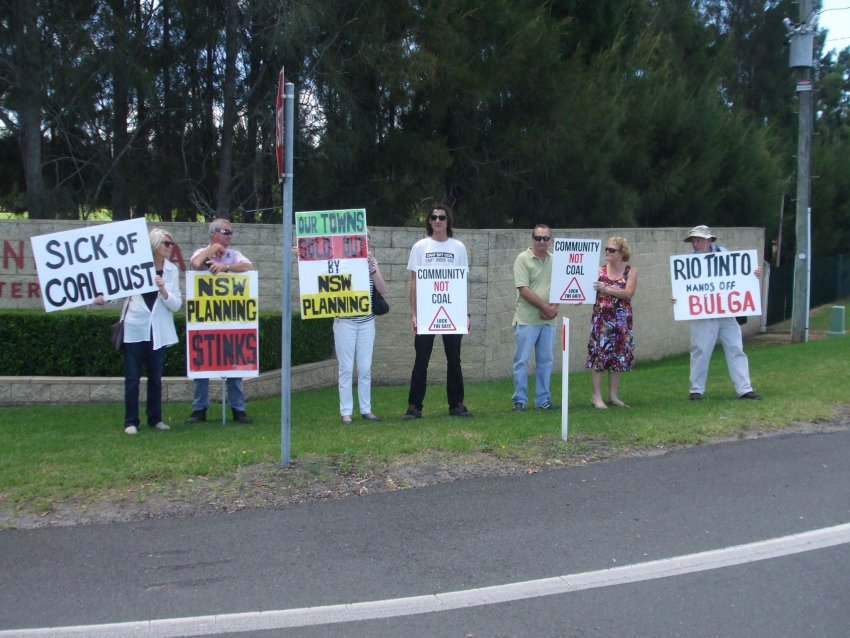
The devastating effects of the coal industry on public health in the NSW Hunter Valley were highlighted in a public forum at Glebe Town Hall on February 23. The forum was organised by the Balmain Defenders of Land, Water, Future and Climate Change, and Climate Change Balmain-Rozelle.
The main speaker was Fiona Armstrong, a health professional and journalist, who is the founder and convener of the Climate and Health Alliance, a coalition of healthcare stakeholders advocating for action on climate change to protect and promote public health.
Armstrong is the author of Coal and Health in the Hunter: Lessons from One Valley for the World, a recently released report (archived by Internet Archive) which blows the lid on the real human and environmental costs of a rampant coal industry.
The report "offers lessons for coal communities everywhere", Armstrong told the forum. "Illnesses in the Hunter Valley from coal cost millions of dollars each year."
Moreover, "Coal is a major contributor to climate change. And climate change is the biggest threat to global public health this century.
"Human-caused climate change is costing the global economy an estimated $1.2 trillion each year," she said.
The recommendations in the report include: A ban on new coal projects in NSW; a long-term transition plan away from coal for the Hunter Valley; a full health assessment of the industry; proper mine fire suppression plans; stricter air quality standards; substantial reform of the state's planning laws; and the establishment of a national Environmental Protection Authority.
Health academic Professor Peter Sainsbury pointed out that coal is not a "cheap" form of energy, as the industry and governments claim. These claims ignore the huge public subsidies to coal companies, and the massive health effects.
"Coal is not 'good for humanity,' as Tony Abbott argues," Sainsbury said. "Its effects on health and global warming are massive."
Francis Grey, founder of Economists at Large, told the forum that "the annual costs of health impacts by the coal industry in the Hunter Valley are an estimated $600 million annually."
"We should talk about the 'air toll', in comparison to the 'road toll’. There are an estimated 300 deaths a year from the pollution and other effects of coal in the Hunter.
"But the good news is that the coal industry is dying. Solar power is on the rise, while the international demand for coal is falling.
"If we move to stop coal now, we can help bring about the next industrial revolution — the biggest in human history," Grey said.
John Lamb, president of the Bulga Milbrodale Progress Association, reported on the struggle of the residents of that small community in the Hunter Valley against plans by mining giant Rio Tinto to expand its Warkworth coalmine in the area.
The residents won their court cases against Rio Tinto in the Land and Environment Court and the NSW Supreme Court last year. However, the NSW coalition government has now moved to override those decisions.
Lamb described the campaign by his local community to prevent the destruction of their farms and the surrounding forest area. He pledged that the residents' fight would continue to protect their land and its environmental heritage.
Video: John Krey, Bulga Milbrodale Progress Association. Climate and Health Alliance.
Read the Coal and Health in the Hunter report (archived by Internet Archive).